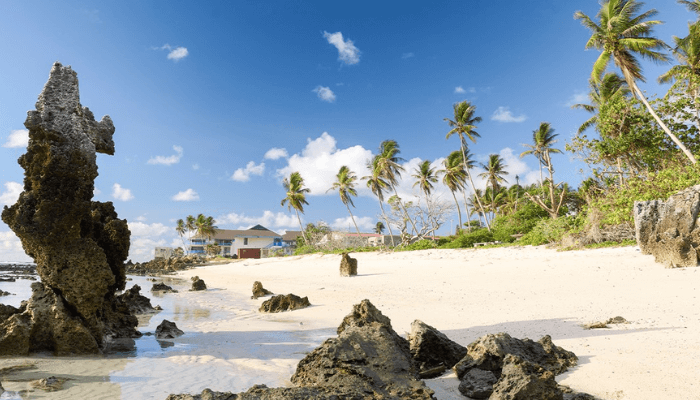Once considered the richest country in the world per capita, Nauru, a small island nation in Micronesia, now faces economic instability. The country was propelled to global attention in the 20th century after rich phosphate deposits were discovered there.
These reserves, used in the production of fertiliser, were heavily mined throughout the century, first by colonial powers and later by Nauruans after the country gained independence in 1968.
Read also: Inside the African island quietly attracting tourists with nature and simplicity
During its economic peak, Nauru experienced a level of state-led prosperity rarely seen elsewhere. A 1982 New York Times report described Nauru as having “a per capita income surpassing that of any oil-rich Arab nation.” The island reportedly became “the smallest and wealthiest independent democracy in the world”.
With phosphate money flowing in, Nauru’s government provided public services such as healthcare, education, and transportation at no cost. Citizens received medical treatment abroad, and tertiary education was covered by the state. Despite personal bank accounts remaining modest for many, the country functioned as what some described as “the ultimate welfare state”.
Read also: Africa’s island destination with 31°C heat and one of the world’s top beaches
This period of wealth was marked by high-profile spending. A BBC report described how luxury cars, including Lamborghinis and Ferraris, were imported. One police officer reportedly bought a Lamborghini only to realise he could not fit in the driver’s seat. The car was later abandoned. Other high-end vehicles, such as Cadillacs and Land Rovers, have been spotted rusting along the roadside.
In a 2024 video, YouTuber Ruhi Çenet explored Nauru and detailed the visible remains of its past wealth. He shared stories from locals, including one who recalled seeing her grandmother leave a bank with a pillowcase filled with cash during the peak of the phosphate boom. Çenet described the situation as a “frenzy of consumption”.
Read also: Nauru: The tiny nation in the Pacific without a capital
However, by the 1990s, phosphate supplies were declining. Years of over-mining had exhausted much of the resource. In search of revenue, Nauru reportedly turned to selling passports and became known as an offshore financial centre. These strategies were eventually phased out.
Phosphate mining resumed in 2005, offering a temporary economic reprieve. In recent years, Nauru also began receiving significant aid from the Australian government for hosting asylum-seekers at the Nauru Regional Processing Centre. This facility became a key revenue stream. The country has also benefited from fishing rights in its surrounding waters, though the economy remains vulnerable to external shocks.
Nauru continues to face health challenges. According to MacroTrends, smoking rates were estimated at 48.50% in 2020. A report by NPR links the country’s high obesity rate—over 70% of the population—to limited access to nutritious food, especially following the economic downturn.





